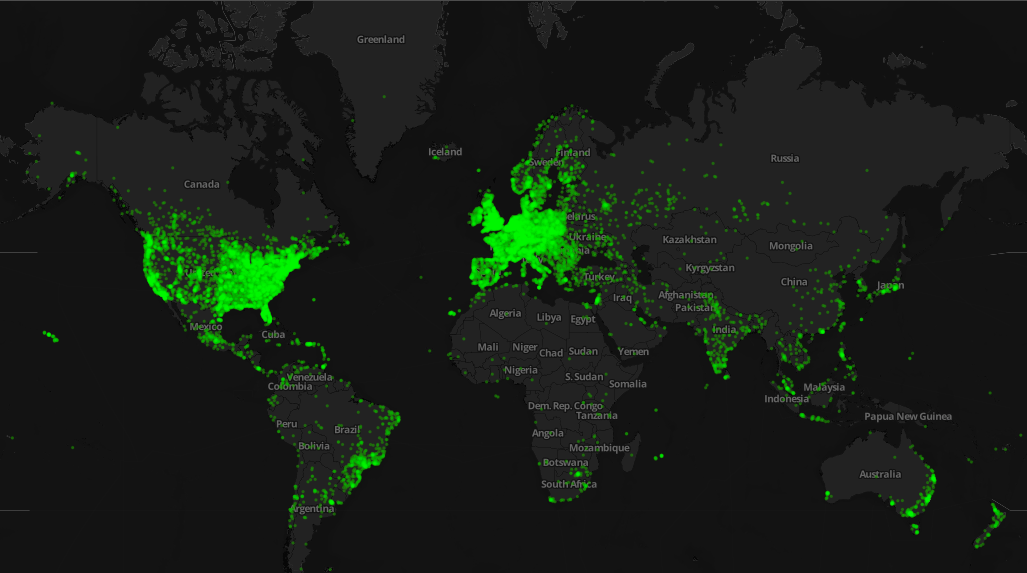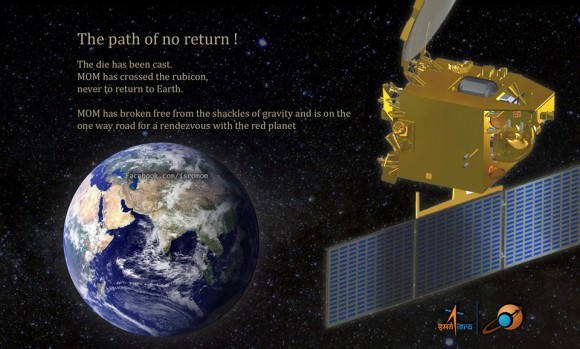Pop quiz. How did Einstein win his Nobel prize? Was it for relativity? Nope, Einstein won the Nobel Prize in 1921 for the discovery of the photoelectric effect; how electrons are emitted from atoms when they absorb photons of light. But what is it? Let’s find out.
Continue reading “Astronomy Cast Ep. 335: Photoelectric Effect”
Where is Earth Located?
You’ve probably heard the saying “everything’s relative”. When you consider our place in the Universe, everything really is relative. I’m recording this halfway up Vancouver Island, in the Pacific Ocean, off the West Coast of Canada. And where I’m standing is about 6,370 kilometers away from the center of the Earth, that way.
From my perspective, the Sun is over there. It’s as large as a dime held at arm’s length. For me it’s really, really far away. In fact, at this exact time it’s further away than any object I you can see with the naked eye.I’m about 150 million kilometers away from the Sun, and so are you.
We’re carving out an elliptical orbit which takes one full year to complete one whole trip around. You, me and the Earth are all located inside our Solar System. Which contains the Sun, 8 planets and a vast collection of ice, rocks and dust. We’re embedded deep within our galaxy, the Milky Way. It’s a big flat disk of stars measuring up to 120,000 light years across.
Our Solar System is located in the middle of this galactic disk. And by the middle, I mean the center of the galaxy is about 27,000 light years that way, and the edge of the galaxy is about the same distance that way.
Our Milky Way is but one galaxy in a larger collection of galaxies known as the Local Group. There are 36 known objects in the local group. Which are mostly dwarf galaxies. However, there’s also the Triangulum Galaxy, the Milky Way, and the Andromeda galaxy… which is by far the largest, most massive object in the Local Group, It’s twice the size and 4 times the mass of the Milky Way.
But where is it?
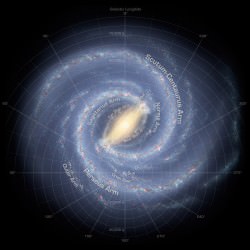
From me, and you, Andromeda is located just an astronomically distant 2.5 million light years that way. Or would that be just short 2.5 million light-years that away? I’m sure you see where this is going.
The Local Group is embedded within a much larger group known as the Virgo Supercluster, containing at least 100 galaxy groups and clusters. The rough center of the supercluster is in the constellation Virgo. Which as of right now, is that way, about 65 million light years away. Which certainly makes the 2.5 million light years to Andromeda seem like an afternoon jaunt in the family car.
Unsurprisingly, The Virgo Supercluster is a part of a larger structure as well. The Pisces-Cetus Supercluster Complex. This is a vast filament of galactic superclusters measuring about 150 million light years across AND a billion light years long. The middle is just over that way. Right over there.

One billion light years in length? Well that makes Andromeda seem right around the corner. So where are we? Where are you, and I and the Earth located in the entire Universe? The edge of the observable Universe is about 13.8 billion light years that way. But it’s also 13.8 billion light years that way. And that way, and that way.
And cosmologists think that if you travel in any direction long enough, you’ll return to your starting point, just like how you can travel in any one direction on the surface of the Earth and return right back at your starting point. In other words, the Earth is located at the very, very center of the Universe. Which sounds truly amazing.
What a strange coincidence for you and I to be located right here. Dead center. Smack dab right in the middle of the Universe. Certainly makes us sound important doesn’t it? But considering that every other spot in the Universe is also located at the center of the universe.
You heard me right. Every single spot that you can imagine inside the Universe is also the center of the Universe. That definitely complicates things in our plans for Universal relevance. And all this sure does make Andromeda seem close by….and it’s still just right over there, at the center of the Universe. Oh, and about every spot in the universe being the center of the Universe? Well, we’ll save that one for another episode.
Carnival of Space #341
This week’s Carnival of Space is hosted by Joe Latrell at his Photos To Space blog.
Click here to read Carnival of Space #341
And if you’re interested in looking back, here’s an archive to all the past Carnivals of Space. If you’ve got a space-related blog, you should really join the carnival. Just email an entry to [email protected], and the next host will link to it. It will help get awareness out there about your writing, help you meet others in the space community – and community is what blogging is all about. And if you really want to help out, sign up to be a host. Send an email to the above address.
Zooniverse Reaches One Million Volunteers
Zooniverse — the renowned home of citizen science projects — is now one million strong. That’s one million registered volunteers since the project began less than seven years ago.
It all began when Galaxy Zoo launched in July 2007. The initial response to this project was overwhelming. Since then the Zooniverse team has created almost 30 citizen science projects ranging from astronomy to zoology.
“We are constantly amazed by the effort that the community puts into our projects,” said the Zooniverse team in an email regarding the news late last week.
Many projects have produced unique scientific results, ranging from individual discoveries to classifications that rely on input from thousands of volunteers. As of today there are 60+ papers listed on the websites publications page, many of which have made the news.
In the first two weeks after Galaxy Zoo’s launch, registered citizen scientists classified more than a million galaxies. Each volunteer was presented with an image from the Sloan Digital Sky Survey and asked to classifiy the galaxy as belonging to one of six categories: elliptical, clockwise spiral, anticlockwise spiral, edge-on, merger, or unsure.

But citizen scientists weren’t simply labeling galaxies, they were helping astronomers to answer crucial questions and raise new ones about our current understandings of galaxy evolution. One significant finding showed that bar-shaped features in spiral galaxies has doubled over the latter half of the history of the Universe. This confirms that bars signify maturity in spiral galaxies and play an important role in shutting down star formation.
Another finding downplayed the importance of collisions in forming supermassive black holes. Citizen scientists found 13 bulgeless galaxies — suggesting they had never experienced a major collision — with supermassive black holes, nonetheless. All healthy black holes, with masses at least millions of times that of the Sun, must have grown through less dramatic processes.
Planet Hunters — a citizen science project developed in 2010 — has also seen wide success. Ordinary citizens examine the Kepler Space Telescope’s light curves of stars and flag any slight dips in brightness that might indicate a planet crossing in front of the star. Many eyes examine each light curve, allowing some to cross check others.
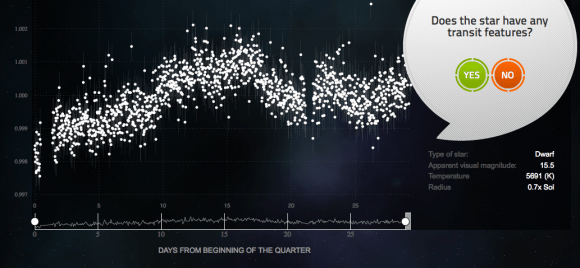
In roughly three years, citizen scientists examined more than 19 million Kepler light curves. Contrary to what many astronomers expected, ordinary citizens were able to spot transiting objects that many computer algorithms missed.
In 2012, Planet Hunter volunteers, Kian Jek and Robert Gagliano discovered an exoplanet in a four-star system. The Neptune-size planet, labeled “Planet Hunters 1” (PH1), orbits its two parent stars every 138 days. A second pair of stars, approximately 90 billion miles away, are also gravitationally bound to the system. This wacky system was later confirmed by professional astronomers.
In 2013, Planet Hunter volunteers discovered yet another planet candidate, which, if confirmed, would make a known six-planet system really the first seven-planet system. The five innermost planets are smaller than Neptune, while the two outer planets are gas giants. All orbit within Earth’s orbit around the Sun.
These are only a few of Zooniverse’s citizen science projects. Others allow ordinary citizens to help analyze how whales communicate with one another, study the lives of the ancient Greeks, and even look at real life cancer data. So join today and become number one million and one.
Zooniverse is produced by the Citizen Science Alliance, which works with many academic and other partners worldwide.
Savage Spacesuit: ‘Mythbusters’ Host’s Mercury Costume Looks Real Enough For Space
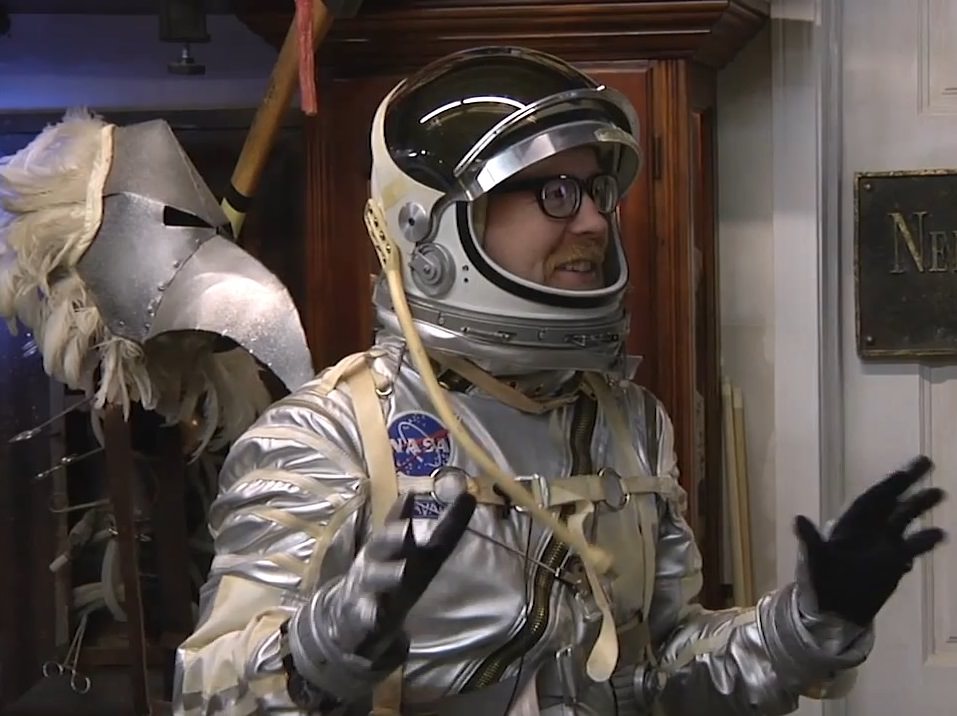
Who wants Adam Savage’s job right now? The cohost of Mythbusters spent the last year working with a San Francisco Bay-area costume designer to come up with this remarkable Mercury spacesuit. While it’s not a faithful replica of any one mission — it’s more a blend of greatest hits from the designs of several — it really looks like Savage could step into a spacecraft at any moment.
“The whole point of the Mercury program … was to figure out how to safely get people into space and what would happen to them,” Savage says in a new video, which you can see below.
“So every single time they came down from a Mercury mission they [the astronauts] would talk to the engineers and spend weeks in meetings going ‘Okay, I couldn’t move my arm this way. I couldn’t hit this switch in this way. I couldn’t turn my head.”
As if that isn’t cool enough, Savage also is sporting an Apollo flight jacket replica that is advertised as being pretty darn close to the original. Check out Adam Savage’s Tested blog for amazing photos as well as a more complete video (for premium members.)
Mercury was the first American spaceflight program, and had six flights between 1961 and 1963. For more information about the Mercury spacesuit, check out this chapter from NASA book “This New Ocean: A History of Project Mercury“. You can also see a photo gallery of different Mercury suits.
Coincidentally, there’s a travelling exhibit on about the history of spacesuits, which Universe Today’s David Dickinson wrote about last week.
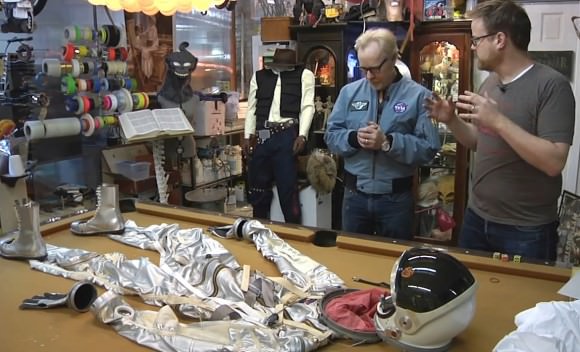
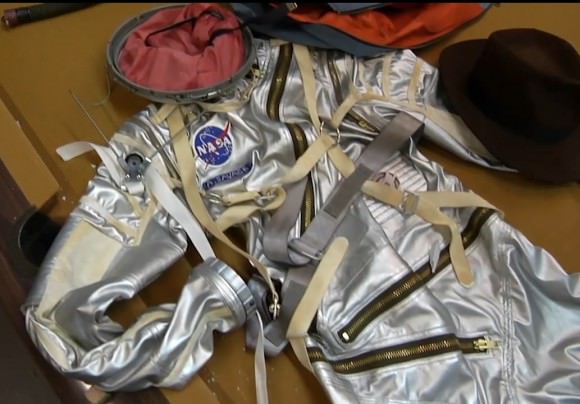
Morpheus Robot Flies As High As The Great Pyramid Before Deking Sideways And Touching Down
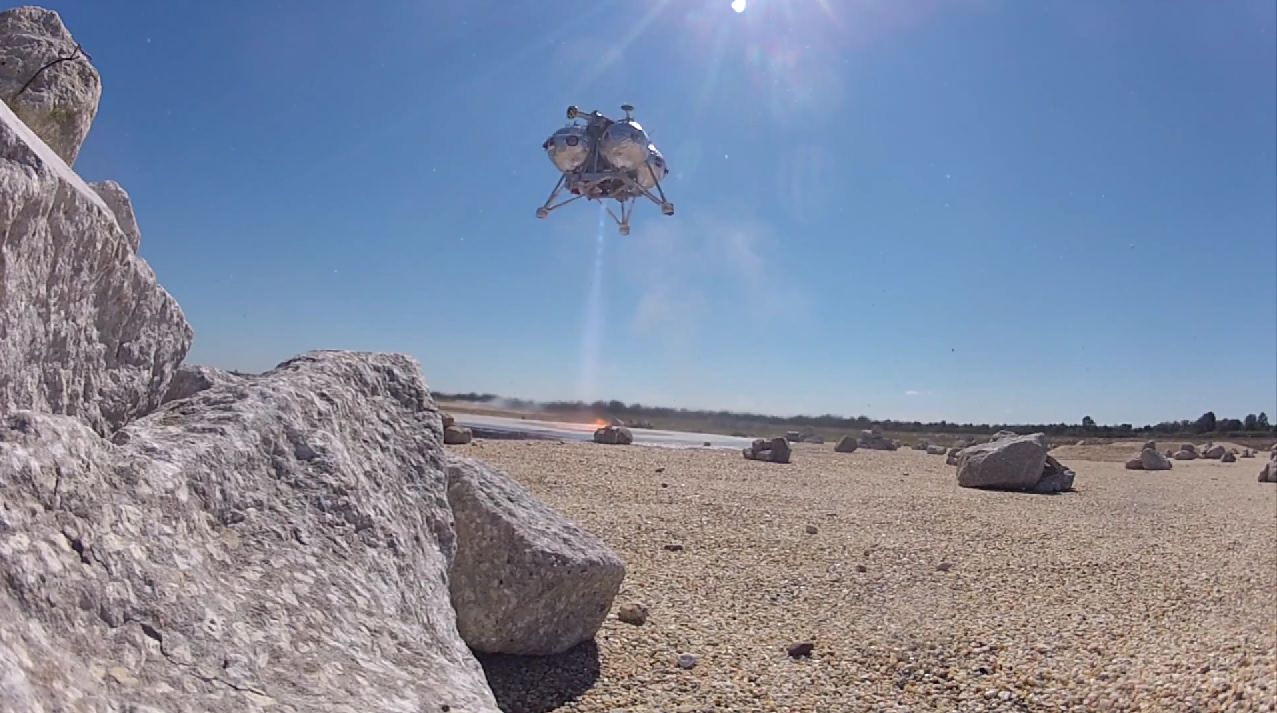
If it weren’t for that blue sky and those trees in behind, we’d be convinced that this little robot is landing on Mars. The Morpheus Lander once again proved how hard-core amazing these free flights are, as the automated robot soared 467 feet (142 meters) high Feb. 10 before jaunting sideways and making a bang-on-target landing.
“Today we went as high as the top of Great Pyramid of Giza,” the NASA Morpheus Lander Twitter feed said, adding that the team was enjoying “celebratory brownies” to mark the milestone. You can watch the whole video below (and we dare you not to gape during that sideways maneuver.)
The goal of Morpheus is to figure out landing technologies for other planets at a low cost, and lately the project has hit a series of literal highs as the robot made successful free flight after free flight. An earlier prototype crashed and burned in 2012, but the team implemented redesigns and has not lost a craft since.
On Feb. 14, Morpheus also completed a series of ground “hot fire” tests to gather data on how the engines are performing. On that day, the project’s Twitter feed assured followers that another free flight test would come “very soon.”
At ‘Star City’, This Is How Astronauts Learn About Soyuz Spacecraft
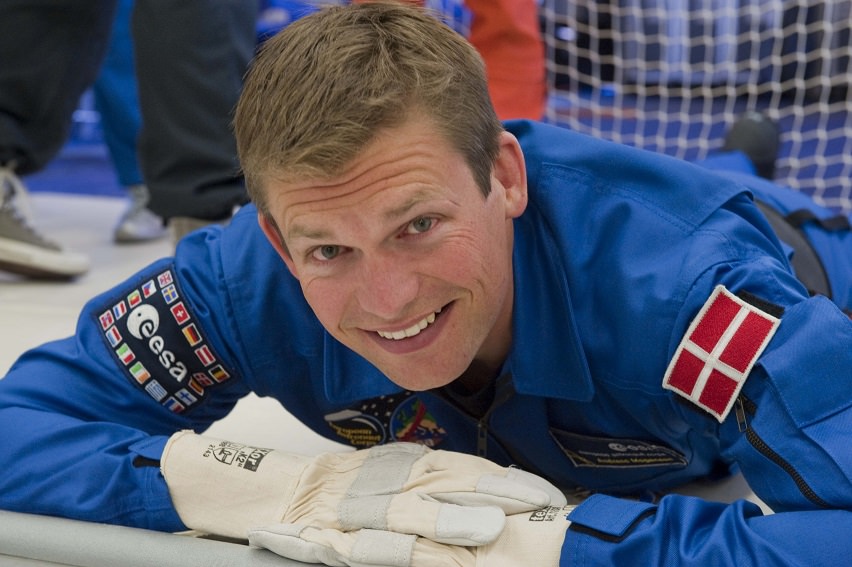
While the world is having a good time watching Olympic sports in Sochi, about a day’s drive north in Russia there are a bunch of astronauts using their evenings for a different purpose: reading an 18-inch high stack of Soyuz spacecraft textbooks.
“So let’s study all this real quick, let’s learn everything, we’ll learn everything we have to learn, and then let’s go to sim[ulation],” says European astronaut Thomas Pesquet in a new video from living quarters in training facility Star City, near Moscow.
“Okay, but I think it takes about a year,” answers fellow European astronaut Andreas Mogensen.
“Oh … so we better get started,” Pesquet says, handing gobs of books to his colleague.
Mogensen has his hands full in other ways as well as he shows us around Star City: there’s a new baby in his family, as you see at the beginning. We doubt he’s getting a lot of sleep right now, but this will certainly be a memorable time as he prepares to be the first Dane in space in 2015.
For more information on the Gagarin Cosmonaut Training Center at Star City, check out this link.
Virtual Star Party – February 16, 2014: Fighting Crime while Transiting Jupiter!
Hosts: Fraser Cain & Scott Lewis
Astronomers: David Dickinson, Gary Gonella, James McGee, Tom Nathe, Mike Phillips, Mike Simmons, Roy Salisbury, Shahrin Ahmad
Views tonight: Horsehead Nebula, Flame Nebula, Europa Transit of Jupiter with Great Red Spot, a cluster of sunspots, Rosette Nebula, a near-Earth asteroid, a capture of Barnard’s Loop, Orion Nebula, M81, various telescopes of the astronomers, our moon, another transit of Jupiter by one of the moons, M67, NGC 2169-the “37” Cluster, our moon – full view, California Nebula.
We hold the Virtual Star Party every Sunday night as a live Google+ Hangout on Air. We begin the show when it gets dark on the West Coast. If you want to get a notification, make sure you circle the Virtual Star Party on Google+. You can watch on our YouTube channel or here on Universe Today.
Where Did Earth’s Water Come From?
Anyone who’s ever seen a map or a globe easily knows that the surface of our planet is mostly covered by liquid water — about 71%, by most estimates* — and so it’s not surprising that all Earthly life as we know it depends, in some form or another, on water. (Our own bodies are composed of about 55-60% of the stuff.) But how did it get here in the first place? Based on current understanding of how the Solar System formed, primordial Earth couldn’t have developed with its own water supply; this close to the Sun there just wouldn’t have been enough water knocking about. Left to its own devices Earth should be a dry world, yet it’s not (thankfully for us and pretty much everything else living here.) So where did all the wet stuff come from?
As it turns out, Earth’s water probably wasn’t made, it was delivered. Check out the video above from MinuteEarth to learn more.
*71% of Earth’s surface, yes, but actually less total than you might think. Read more.
MinuteEarth (and MinutePhysics) is created by Henry Reich, with Alex Reich, Peter Reich, Emily Elert, and Ever Salazar. Music by Nathaniel Schroeder.
UPDATE March 2, 2014: recent studies support an “alien” origin of Earth’s water from meteorites, but perhaps much earlier in its formation rather than later. Read more from the Harvard Gazette here.
100 Days of MOM – India’s 1st Mars Mission Streaking to Red Planet Rendezvous
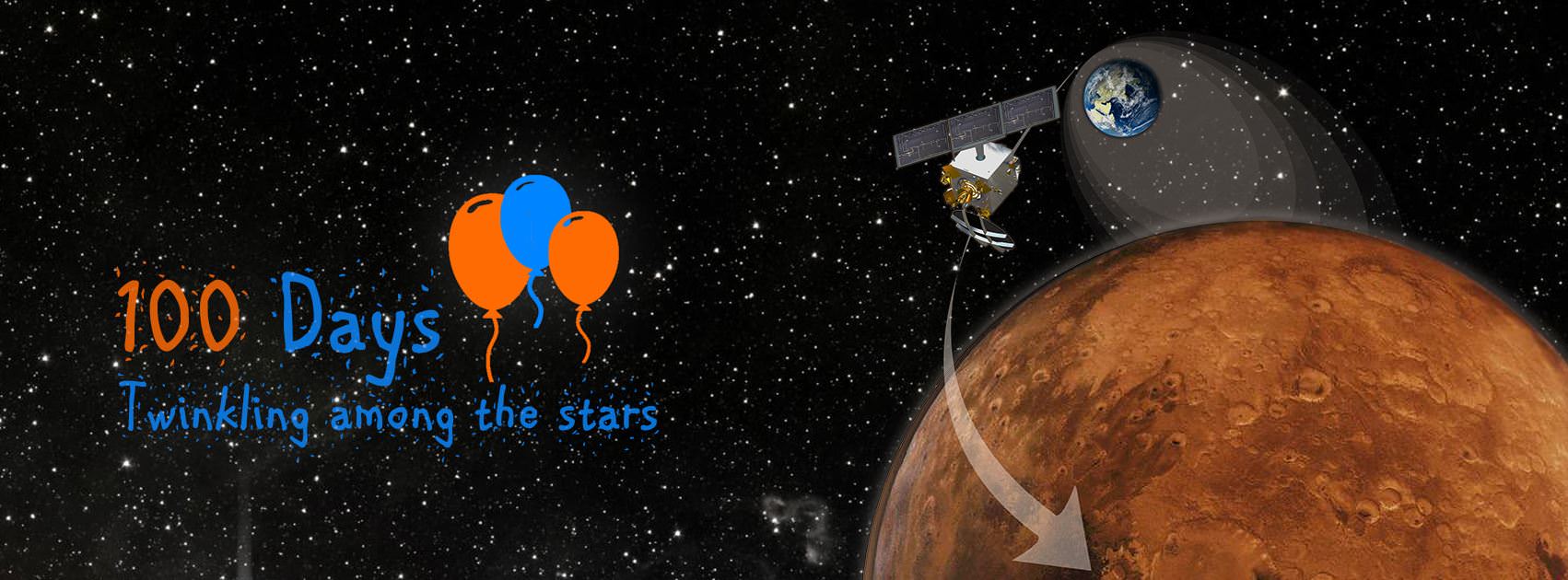
India’s maiden Mars explorer, the Mars Orbiter Mission or MOM, celebrated 100 days speeding through space this past week, racing outwards on its historic journey to the Red Planet.
After streaking through space for some ten and a half months, the 1,350 kilogram (2,980 pound) MOM probe will rendezvous with the Red Planet on September 24, 2014 – where she will study the atmosphere and sniff for signals of methane.
Feb. 12, 2014 marked ‘100 Days of MOM’ since the picture perfect blast off on Nov. 5, 2013 from India’s spaceport at the Satish Dhawan Space Centre, Sriharikota, atop the nations indigenous Polar Satellite Launch Vehicle (PSLV) which placed the probe into its initial Earth parking orbit.
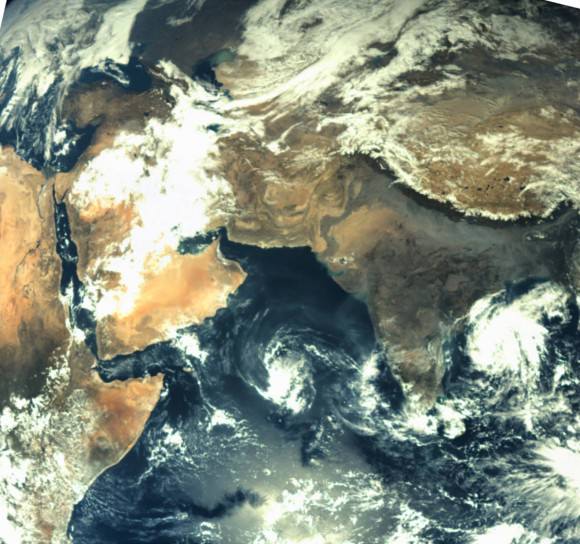
A series of six subsequent orbit raising maneuvers ultimately culminated with the liquid fueled main engine firing on Dec. 1, 2013 for the Trans Mars Injection(TMI) maneuver that successfully placed MOM on a heliocentric elliptical trajectory to the Red Planet.
The TMI, affectionately dubbed ‘The mother of all slingshots’ finally provided the craft with sufficient thrust to achieve escape velocity and blast free of the Earth’s sphere of influence forever and begin her nearly yearlong momentous voyage to Mars.
The first of four in flight Trajectory Correction Maneuvers, TCM-1, was conducted by firing the 22 Newton Thrusters for a duration of 40.5 seconds on December 11, 2013. A trio of additional TCM firings are planned around April 2014, August 2014 and September 2014.
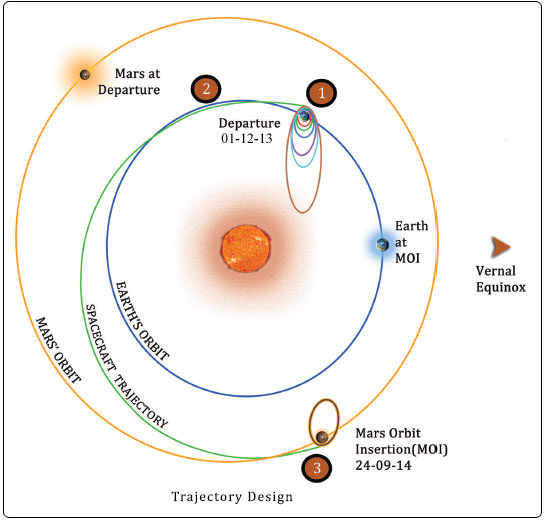
MOM was designed and developed by the Indian Space Research Organization’s (ISRO) at a cost of $69 Million and marks India’s inaugural foray into interplanetary flight.
During the first 100 days, the probe has traveled about 190 million kilometers and has a little less than 500 million kilometers and 205 days to go during her journey of some 680 million kilometers (400 million miles) overall.
A health check on February 6, 2014 confirmed that the 15 kg (33 lb) science payload comprising five Indian built instruments was turned “ON” and is operating well.
MOM is currently some 16 million km distant from Earth and one way radio signals take approximately 55 seconds.
“The round trip time is almost 2 minutes for a communication signal to go to MOM and come back, about the same time mom takes to make noodles!” ISRO noted humorously in a Facebook mission posting.
“Keep going MOM!”
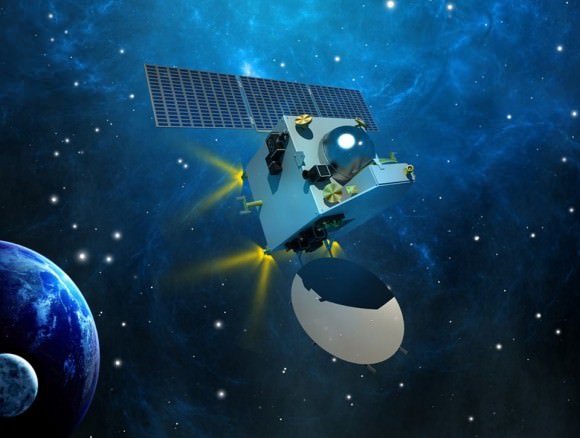
Following the ten month cruise through space the orbital insertion engine will fire for the do or die burn on September 24, 2014 placing MOM into an 377 km x 80,000 km elliptical orbit around Mars.
MOM is not alone in the frigid vacuum of space. She is joined by NASA’s MAVEN orbiter in pursuit of Mars.
MOM will reach Mars vicinity just two days after the arrival MAVEN on Sept. 22, 2014.
To date MAVEN has flown over 137 million miles (221 million km) of its total 442 million miles (712 million km) path to Mars.
If all continues to goes well, India will join an elite club of only four who have launched probes that successfully investigated the Red Planet from orbit or the surface – following the Soviet Union, the United States and the European Space Agency (ESA).
Both MAVEN and MOM’s goal is to study the Martian atmosphere, unlock the mysteries of its current atmosphere and determine how, why and when the atmosphere and liquid water was lost – and how this transformed Mars climate into its cold, desiccated state of today.
Together, MOM and MAVEN will fortify Earth’s invasion fleet at Mars. They join 3 current orbiters from NASA and ESA as well as NASA’s pair of sister surface rovers – Curiosity and Opportunity.
Although they were developed independently and have different suites of scientific instruments, the MAVEN and MOM science teams will “work together” to unlock the secrets of Mars atmosphere and climate history, MAVEN’s top scientist told Universe Today.
“We have had some discussions with their science team, and there are some overlapping objectives,” Bruce Jakosky told me. Jakosky is MAVEN’s principal Investigator from the University of Colorado at Boulder.
“At the point where we [MAVEN and MOM] are both in orbit collecting data we do plan to collaborate and work together with the data jointly,” Jakosky said.
Stay tuned here for Ken’s continuing MOM, Opportunity, Curiosity, Chang’e-3, LADEE, MAVEN, Mars rover and more planetary and human spaceflight news.



